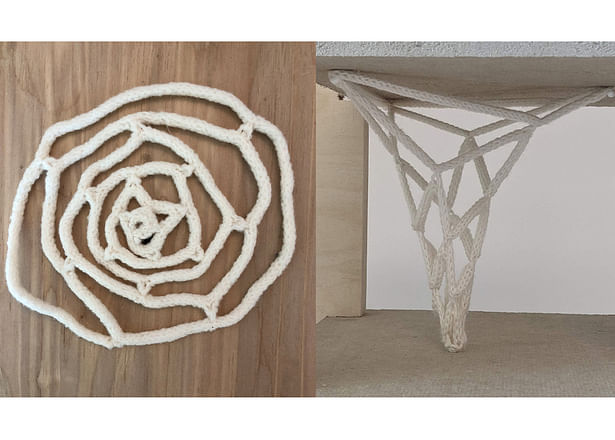
University Park, PA

UNIVERSITY PARK, Pa. — Work by Felecia Davis, associate professor of architecture in the Stuckeman School, and her team of Computational Textiles Lab (SOFTLAB) researchers in the Stuckeman Center for Design Computing at Penn State that explores Black culture, its relationship to technology and concepts of translation in architectural design will be featured in a new exhibition in downtown Montreal. Titled “Current Textile Design | Textile Design Now,” the exhibit opens Nov. 29 and runs through Feb. 11, 2024, at the Design Center of the University of Quebec at Montreal.
The research that will be on display is the result of the SOFTLAB team’s “Dreadlock Series” project, which focuses on locking or dreadlock hairstyles in Black culture. The process of braiding hair is translated into computer code that can be used to develop a material or fabric – textiles – that can create or enhance architectural spaces.
“SOFTLAB will show two architectural models from the Dreadlock Series where we look at the potentials of felted and interlocked fibers for use in building textile tension structures. These are called ‘Pop-Up Roses,’” said Davis.
Ian Danner, a SOFTLAB graduate student researcher from the College of Arts and Architecture’s School of Visual Arts, created the models on a hand-knitting machine using the knitted wool isocord.
“These started out as flat textiles using what we call African fractals or a Fibonacci series to make the rose,” explained Davis. “I then suggested that these roses could be popped up to be used as tension structures or with a bio-based resin to make an architectural structure that can be shaped using gravity or tension.”
Hiranshi Patel, an architecture master’s student in the Stuckeman School and SOFTLAB researcher, helped develop the tensioning stands that can be used to apply different tensions to the models.
Aysan Jafarzadeh, a recent master of architecture graduate and a graduate researcher with SOFTLAB, provided graphic design and code development support for the work.
The SOFTLAB team’s Dreadlock Series work was also in an exhibition at the one-day Material Variance Symposium on Sept. 19 at the Columbia University Graduate School of Architecture, Planning and Preservation in New York. The event featured material design researchers, building scientists and artists who discussed the variability of raw, earth- and fiber-based building materials and how their life cycle, supply chains, fabrication techniques and policies can be improved moving forward.
The Dreadlock Series project is supported by the Graham Foundation for Advanced Studies in the Fine Arts and the College of Arts and Architecture's Research and Creative Activity Grant Program in Racial Justice, Anti-Discrimination and Democratic Practices, and the Stuckeman Center for Design Computing. The project was done in collaboration with Sheryl Tucker de Vazquez, architect and associate professor at the University of Houston; William D. Williams, architect and the Smith Visiting Professor at Rice University School of Architecture; and Marcella del Signore, architect and associate professor and director of the Master of Science in Architecture, Urban and Regional Design program at the New York Institute of Technology, School of Architecture and Design.
No Comments
Block this user
Are you sure you want to block this user and hide all related comments throughout the site?
Archinect
This is your first comment on Archinect. Your comment will be visible once approved.